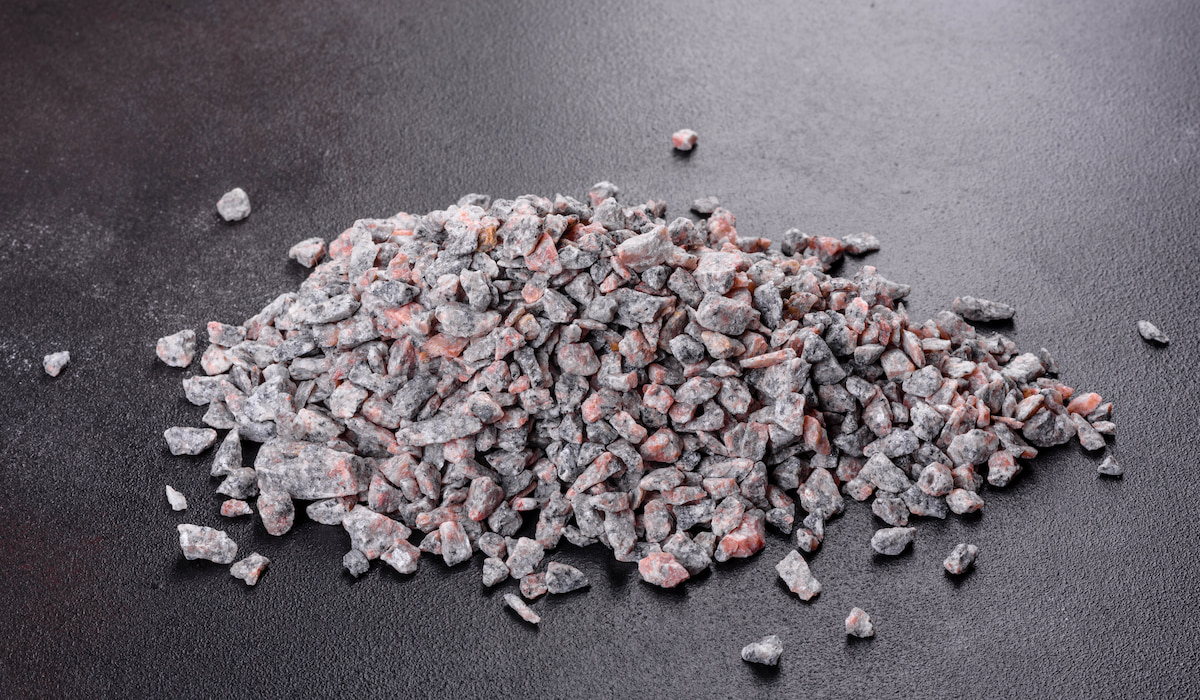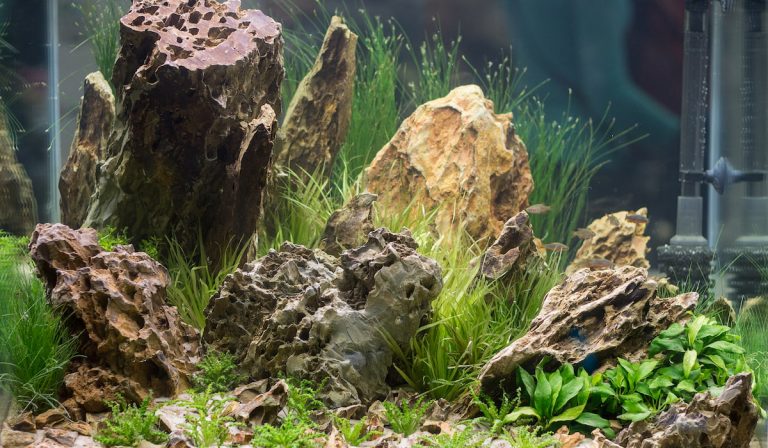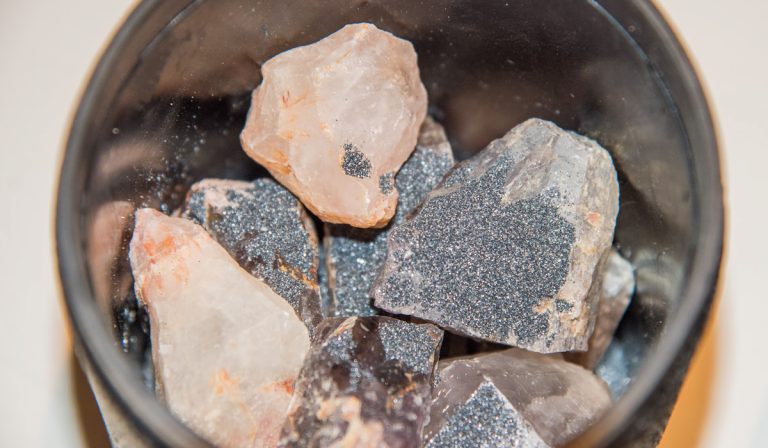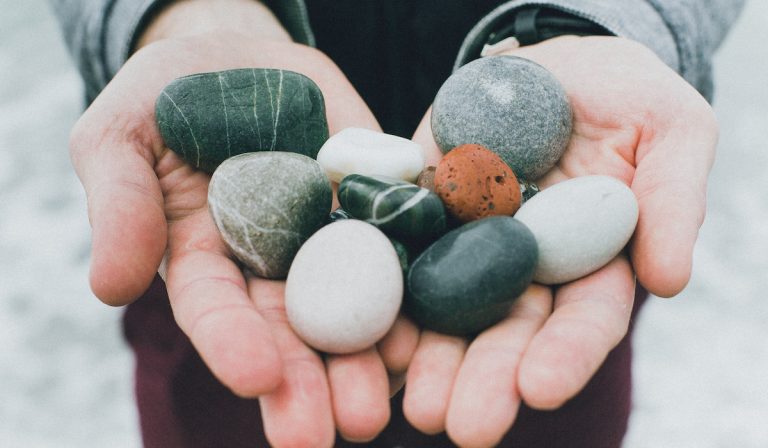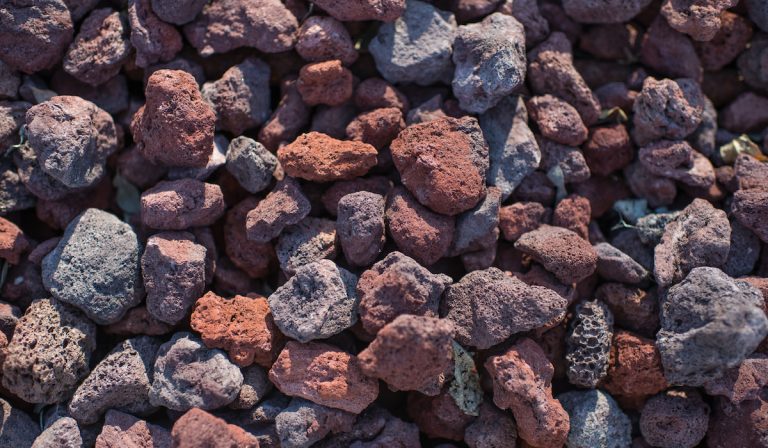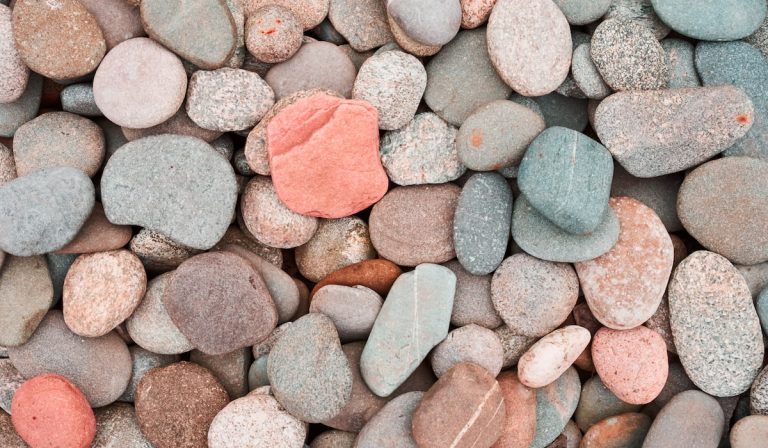Is Rock Tumbler Grit Toxic? (5 Myths Busted!)
Something common to almost every human activity is the production of waste. Rock tumbling helps you to produce very beautiful stones, but you are left with a slurry. Are rock tumbler grit and slurry toxic?
Rock tumbler grit is not toxic, so the slurry is also not toxic. Rock tumbler grit is composed of different safe compounds while the slurry is made of spent grit, impurities from the rock, and water.
What compounds are rock tumbler grit made of? How do you safely dispose of rock tumbler grit slurry? We’ll cover these questions and more in this article.

What Is Rock Tumbler Grit?
Rock tumbler grits are media or particles used to shape, grind, or polish rocks in a rock tumbler. Some elements used to make rock tumbler grit are aluminum, cerium, silicon carbide, tin oxide, chrome and oxide. No serious ill effect has been recorded in constant users of rock tumbler grit.
This does not mean that you should not practice safety always. It is always good to think about safety first.
A lot of people have different opinions about rock tumbler grit. While some people are talking based on experience, some are just saying unproven myths. Let’s bust some myths.
Busted Myths and the Truth
Here are some myths about rock tumbler grit and the truth:
- Tumbler Grit is Toxic to Patients with Respiratory Issues: In the case of asthmatic patients and others with respiratory issues, rock tumbler grit is not the problem but dust. Asthmatic patients should not go close to fine particles of grit as some can become dust.
- Tumbler Grit Can Kill Pets: Some users of rock tumbler grit have seen their pets (especially cats) eating grit. After a trip to the vet, there was no serious effect recorded. Even though grit has not killed any pet on record, you still need to prevent your pets from eating it.
- Grit Can Blind Your Eyes: If you carefully rinse off dust particles of grit from your eyes, you will not go blind.
- Tumbler Grit Slurry Can Kill Your Garden Plants: When you dispose of grit slurry in the garden, it hardens like cement. Tumbler grit slurry cannot kill plants because it is not toxic. If your plants are dying, it might be because of suffocation or over-fertilizing.
- Tumbler Grit is 100% Safe: Even though rock tumbler grit is safe, you should not misuse it as individual people have different reactions to rock tumbler grit. Some people may be allergic to the particular compound of the grit that they purchased.
That being said, you need some safety tips when working with rock tumbler grit.

Useful Tips When Handling Rock Tumbler Grit
Here are some useful safety tips for you:
1. Do Not Inhale It
Do not try to inhale rock tumbler grit as it should not go into your body. Too many dust particles can block your airways and can lead to serious respiratory problems. You should wear a mask when using rock tumbler grit if you have respiratory problems.
2. Use Larger Particles
Larger grit particles are more effective when tumbling rocks. These particles are also safer as they will not become dust and therefore, you cannot inhale them.
3. Add More Water When Tumbling
Water helps rocks to cool off when tumbling. Water also helps your rocks to smoothen quickly as water prevents lubrication. Finally, water prevents your grit and rock particles from becoming dust that you can inhale.
Instead of becoming dust, the little particles in your rock tumbler will mix with water to become rock tumbler grit slurry.
4. Keep The Grit Far Away from Children and Pets
Children and pets are very curious and may want to consume your rock tumbler grit. Please do not allow your children or pets to have access to your rock tumbler grit as it can be harmful to them if they eat it or inhale the dust particles.
5. Protect Your Eyes
If you are using very fine particles of grit, you should protect your eyes so that dust cannot reach your eyes. Protect your eyes by using safety glasses or other industrial glasses.
Make sure to use the tips above especially if you have children and pets. Let’s discuss how you can dispose of your rock tumbler grit slurry after use.
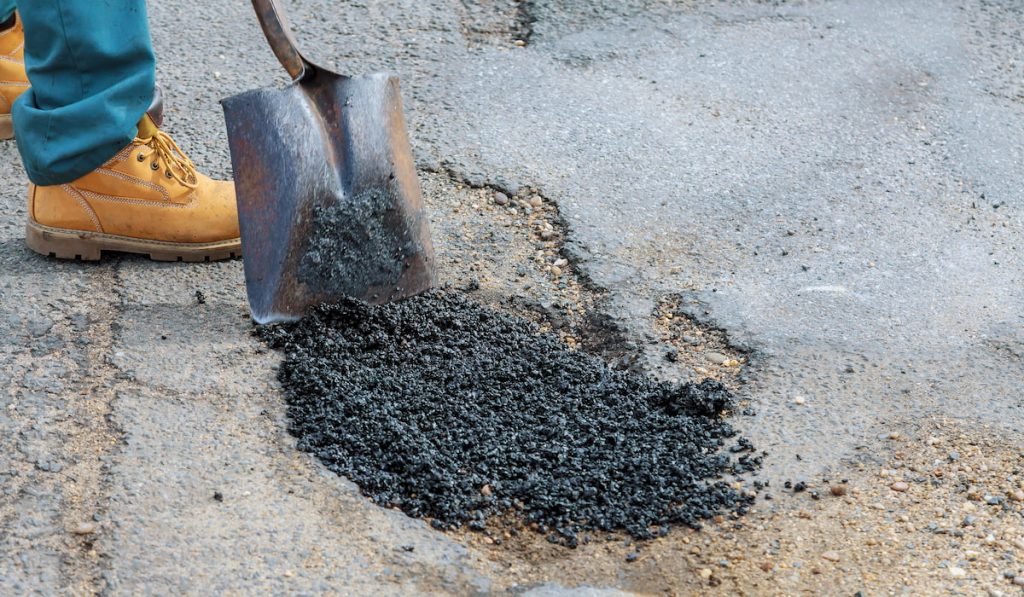
How to Dispose of Rock Tumbler Grit Slurry
Here are some safe methods to dispose of your rock tumbler grit slurry.
1. Fill Potholes with It
Remember that rock tumbler grit slurry hardens like cement after use. This means that you can use it to fill potholes if there are any around your home or office.
While you can pour the slurry into the pothole just the way it is, you can mix it with gravel before pouring so that it does not break easily.
2. Dispose of It in the Yard
If you have a yard, you can dispose of the grit slurry there. You can spread it across the yard, dump it in a corner, or bury it in the yard. Spent rock tumbler grit slurry does not kill plants, so you do not have anything to fear.
If you do not like the look of grit slurry in your yard, consider burying it.
3. Dispose of It in a Trash Can
To dispose of your rock tumbler grit in a trash can, keep it in a bucket and wait for it to harden. When the slurry has hardened like a rock, you can dispose of it in a trash can.
Related Questions and Answers
1. Can You Reuse Rock Tumbler Grit?
After tumbling rocks with your rock tumbler grit, the grit mixes with impurities that can make it less effective. This means that reusing rock tumbler grit may not grind, shape, or polish your rocks as it did before.
You should dispose of your rock tumbler grit or consider using it in the polishing phase.
2. How Does Grit Grind Stones?
The material used to make rock tumbler grit is harder than regular rocks. This means that if you rub rocks against grit, grit will scratch rocks (and not the other way round). Since grit is harder than rocks, rock tumblers use grit to easily grind, shape, and polish rocks.
For example, silicon carbide is very hard and is very effective for almost every type of rock (except diamonds and other very hard rocks).
If you use a less-effective type of grit such as sand or eggshells, you will not successfully polish your rocks as these types of grit cannot scratch the rocks.
3. Can You Make Your Own Grit?
Unless you are a chemist or you work in a factory, you should not make your own grit. Grit is widely available in stores and you can get some cheap brands, so it is usually not cost-effective to make your own grit.
You, however, can explore different materials. For example, if you have different types of rocks, you can pound harder ones and use them as grit for softer ones.
4. What Type of Grit Should You Use?
There are so many types of grit. For example, there are aluminum oxide, cerium oxide, silicon carbide, tin oxide, chrome oxide, and many other types of grit. These materials also have grades. According to the material and grade, rock tumbler grit has different effects on rocks.
When selecting the right grit for you, consider the cost as well as the hardness of the grit.
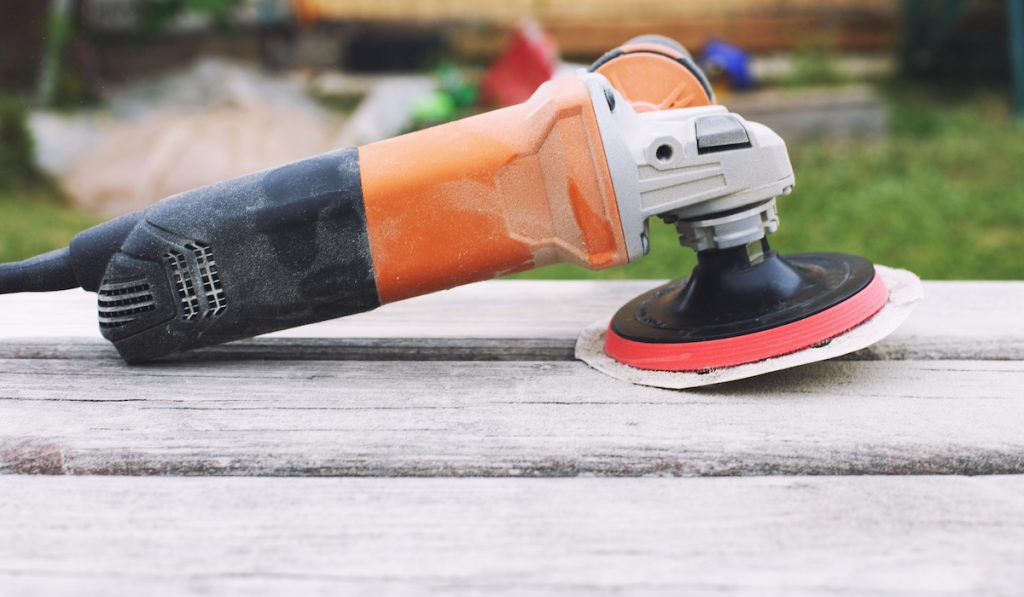
5. What Are Cost-Effective Ways to Polish Rocks?
Some ways to reduce the cost of polishing rocks are:
- Use Less-Expensive Grit: There are many cheap brands of rock tumbler grit available in stores. You should consider using these brands.
- Reuse Grit When You Can: Many persons reuse grit in the polishing phase of rock tumbling as that phase does not require very sharp or hard grit.
- Use a Bench Grinder: If you have a bench grinder and know how to operate it, you should consider using it to shape and polish your rocks. Remember to think about safety first.
- Use Cheaper Grit in the Polishing Phase: In the polishing phase, you can try out cheaper brands of grit and plastic pellets.
- Use a Dremel: A Dremel is just like a bench grinder, but it is handheld. Install a grinding head into the Dremel and use it to polish your rocks. Remember to hold the rocks with a clamp or other tool.
Note that if you decide to use cheaper brands of rock tumbler grit, it may not quickly grind or polish your rocks in a rock tumbler.
Final Thoughts
Even though there are many myths around rock tumbler grit, you should know that rock tumbler grit is not toxic and is safe to use.
Even though it is safe, however, remember to protect your eyes and nostrils from rock tumbler grit. Also, prevent your children and pets from consuming rock tumbler grit.
Resources
- https://forum.rocktumblinghobby.com/thread/2058/any-products-harmful
- https://rocktumbling.co/rock-tumbler-grit/
- https://www.rockseeker.com/how-to-dispose-rock-tumbler-grit/
- https://rockhoundresource.com/disposing-of-rock-tumbling-grit-slurry-6-proven-methods/
- https://askinglot.com/are-rock-tumblers-safe

